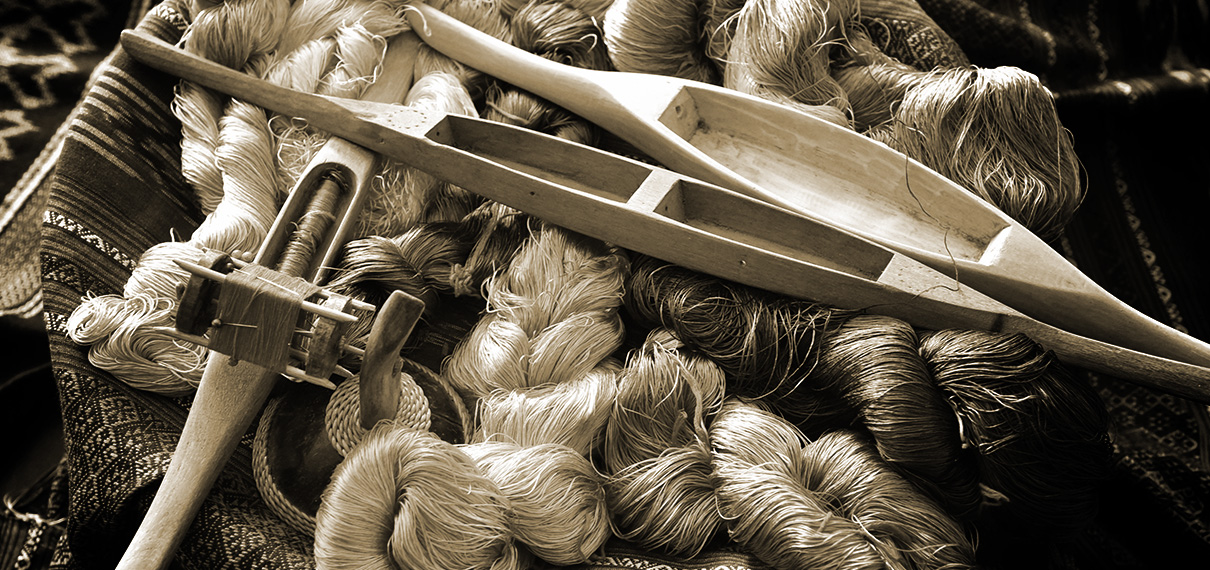About Us
Weavers of Ireland exists to honour and celebrate Ireland’s weaving tradition, a craft that has carried the stories of our people for thousands of years. From the ancient fragments of cloth found in peat bogs to the mills and workshops that continue to weave today, this tradition remains a living part of our culture, our heritage and our future.
Our purpose is to bring together Ireland’s finest weaving houses and clothing makers so that their artistry can be shared with the world. Each weaver contributes something unique, whether it is a signature style, a family story or a technique passed down through generations, yet all remain united by authenticity, quality and respect for tradition.
Our Weavers
We are proud to represent the most celebrated names in Irish weaving and design.
- Mucros Weavers create timeless tweed collections for men and women, along with scarves and accessories, woven in the peaceful grounds of Muckross House in Killarney.
- Foxford Woollen Mills are renowned for luxurious throws and scarves, with a history that stretches back to 1892.
- Jack Murphy design heritage inspired coats, jackets, blazers and hats for life in both town and country.
- Lee Valley are known for their traditional Irish grandad shirts, jackets, vests and nightwear.
- John Hanly and Co. are masters of capes, scarves and throws, combining classic style with contemporary colour.
- Jimmy Hourihan bring elegance to capes, shawls and Celtic scarves crafted with a designer’s touch.
- Dubarry of Ireland are celebrated for waxed and leather jackets, tweed blazers, ponchos and skirts with enduring style.
- Celtic Tweeds offer tailored jackets, gilets, waistcoats and accessories proudly designed and made in Ireland.
- Branigan Weavers are distinctive for their ponchos, capes, scarves, hats and tweed collections with a bold creative spirit.
- Aran Sweater Market is world famous for traditional and contemporary Aran knitwear for women, men and children.
- Kerry Woollen Mills continue over 300 years of heritage with wraps and stoles made with care and craft.
- Hanna Hats handcraft caps and hats in Donegal, each one a unique piece of Irish character.
- McKernan Woollen Mills are a family run mill producing scarves and textiles with artisanal flair.
- Studio Donegal weave luxury tweeds and woollens by hand in the heart of Donegal.
- Aran Woollen Mills create authentic Irish knitwear crafted with care since 1965.
- Emerald Isle Weaving bring a contemporary perspective to Ireland’s timeless weaving traditions.
The Story of Irish Weaving
Weaving in Ireland is as old as the land itself. Cloth fragments dating back to 1600 BC have been discovered in bogs and lake dwellings, proof that spinning and weaving were part of daily life long before written history.
By the Middle Ages, weaving was at the centre of Irish society. The Weavers Guild of Dublin, chartered in 1446, set high standards for the craft and gave formal recognition to its importance. Through famine, hardship and industrial change, weaving endured as families relied on it both for survival and for trade.
The nineteenth and twentieth centuries saw the revival of weaving in Ireland as mills and cooperatives gave fresh life to the craft. Mills such as Foxford in Mayo and the looms of Mucros in Kerry became not only workplaces but guardians of heritage.
Today Irish weaving continues to flourish. Many mills still work with century old looms while also embracing sustainable practices, contemporary design and a global audience. It is this balance of past and present that makes Irish weaving truly unique.
Our Promise
When you choose from Weavers of Ireland you are not simply buying a garment or a textile. You are welcoming a piece of Ireland’s story into your life. Each item carries with it the skill of generations, the character of its maker and the enduring spirit of Irish craft.
We remain true to what weaving in Ireland has always stood for, with heritage, craftsmanship and authenticity woven into every thread.


